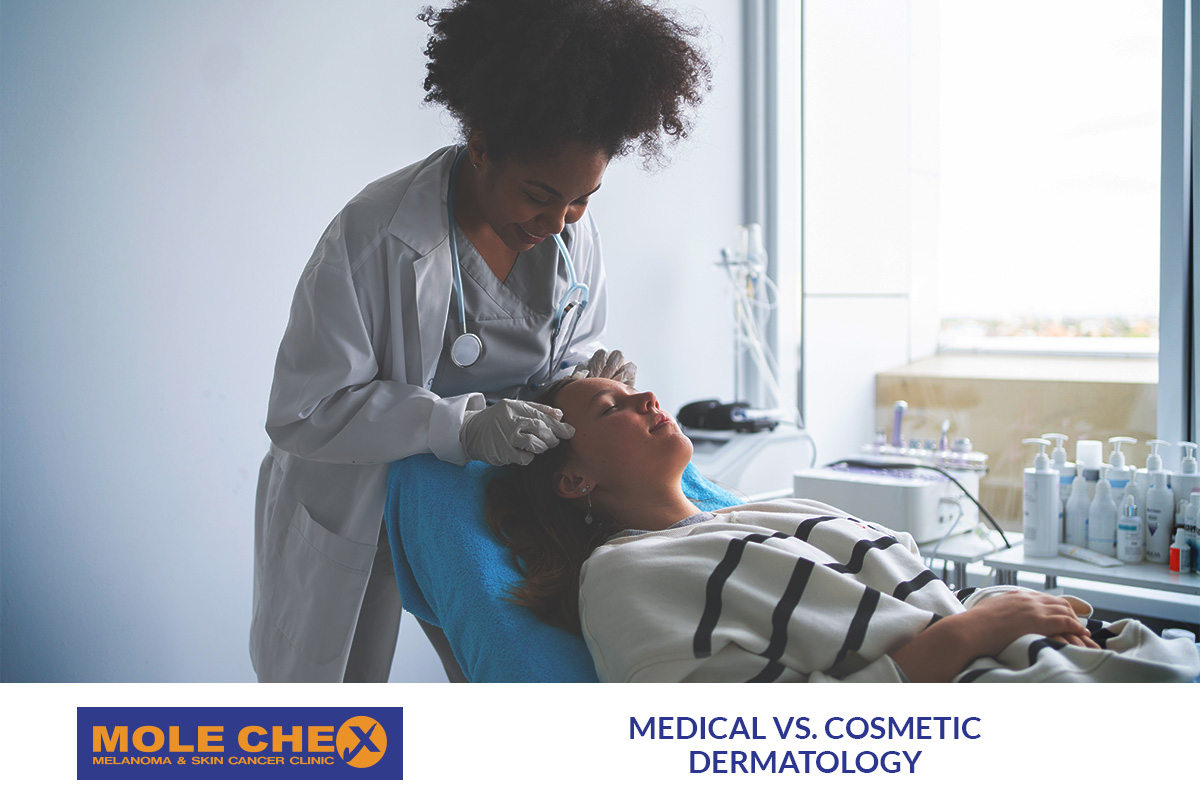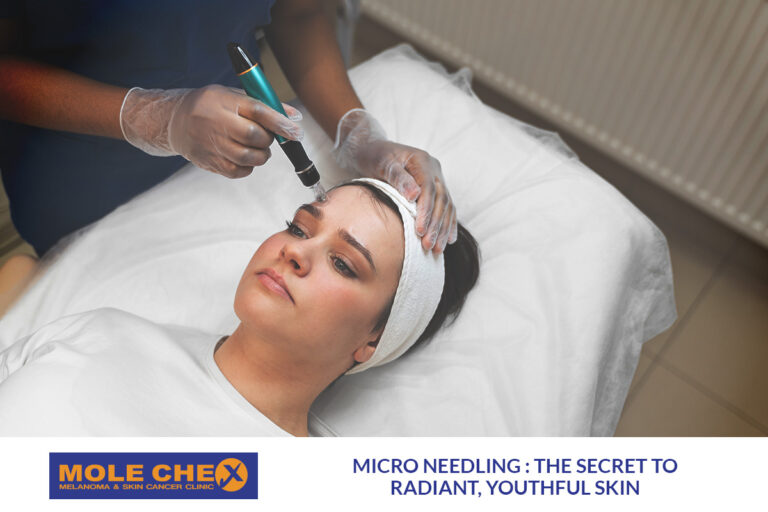Understanding Medical vs. Cosmetic Dermatology

medical vs. cosmetic dermatology is key to choosing the right care for your skin. While both specialties aim to improve skin health, medical dermatology focuses on diagnosing and treating skin conditions like eczema, acne and skin cancer, whereas cosmetic dermatology is geared toward enhancing your skin’s appearance through treatments like injectables, chemical peels and skin rejuvenation therapies.
For anyone navigating skincare concerns such as acne, eczema, pigmentation, or ageing, knowing whether you need medical or cosmetic dermatology is key to getting the right results.
What This Blog Covers
In this article, you will learn:
- The difference between medical and cosmetic dermatology
- What conditions each type treats
- The most common procedures in each category
- How these services differ in purpose and outcomes
- When to seek support from a skin doctor
What Is Medical Dermatology?
Medical dermatology focuses on diagnosing and treating skin, hair and nail conditions that affect health and comfort. These conditions often require prescription medications, medical procedures, or ongoing management.
Common conditions treated in medical dermatology include:
- Skin cancer – Early detection and treatment of basal cell carcinoma, squamous cell carcinoma and melanoma
- Acne – Prescription-based management for moderate to severe breakouts
- Eczema and dermatitis – Relief from chronic inflammation, dryness and itching
- Psoriasis – Treatment for scaly, thickened patches of skin
- Rosacea – Redness, bumps and visible blood vessels across the face
- Fungal and bacterial skin infections – Including tinea, impetigo and boils
- Hair and nail disorders – Thinning hair, alopecia, fungal nail infections
These concerns may be managed through creams, oral medication, cryotherapy, light therapy, or surgical removal depending on the condition and severity.
What Is Cosmetic Dermatology?
Cosmetic dermatology involves non-surgical treatments aimed at improving the skin’s appearance. These procedures are elective and typically not covered by Medicare or health funds.
People often turn to cosmetic dermatology for concerns such as:
- Fine lines and wrinkles
- Sun damage and pigmentation
- Uneven skin tone or texture
- Loss of facial volume
- Enlarged pores
- Acne scarring
- Skin laxity or sagging
Popular cosmetic skin treatments include:
- Botox injections – Soften expression lines and prevent new wrinkles
- Dermal fillers – Restore volume to lips, cheeks, or under-eye areas
- Chemical peels – Brighten skin, reduce pigmentation and improve texture
- Micro needling – Stimulate collagen to reduce scarring and fine lines
- PRP therapy (Platelet-Rich Plasma) – Natural rejuvenation for face and hair
- LED light therapy – Calm inflammation and accelerate skin recovery
These treatments are ideal for patients wanting to boost their skin’s appearance without invasive procedures.
Comparing Medical and Cosmetic Dermatology
Understanding how these two branches differ can help you find the right treatment.
| Feature | Medical Dermatology | Cosmetic Dermatology |
| Primary Purpose | Treats skin diseases and disorders | Improves skin appearance |
| Common Concerns | Acne, eczema, psoriasis, skin cancer | Wrinkles, scarring, sun damage, volume loss |
| Treatment Type | Prescription, excision, cryotherapy, light-based therapies | Botox, fillers, lasers, micro needling, peels |
| Outcome Focus | Restore skin health and prevent complications | Enhance aesthetic and skin texture |
| Insurance Coverage | Often eligible for Medicare or private cover | Generally out-of-pocket |
| Practitioner | GP with skin focus or dermatologist | Cosmetic doctor, aesthetic nurse, trained skin therapist |
Can You Combine Both Medical and Cosmetic Treatments?
Yes. Many skin concerns have both medical and cosmetic aspects. For example:
- Acne may require medical treatment to reduce inflammation and cosmetic treatments to improve scarring.
- Rosacea often responds to prescription creams or antibiotics, but may also benefit from laser therapy to reduce visible vessels.
- Sun damage might involve skin cancer screening and removal of lesions, followed by chemical peels or light therapy for cosmetic repair.
By combining both medical and cosmetic approaches, you can achieve healthier, clearer and more youthful-looking skin.
When Should You See a Skin Specialist?
Consider seeking advice from a skin doctor or GP with dermatology training if you:
- Notice a new or changing mole
- Struggle with chronic skin issues like acne, eczema, or rosacea
- Experience scarring, pigmentation, or sun damage
- Feel concerned about signs of premature ageing
- Want personalised skincare advice or non-surgical cosmetic treatment options
An assessment helps identify underlying conditions and ensures you receive the most appropriate care for your skin type.
Final Thoughts
Medical dermatology focuses on treating skin disease. Cosmetic dermatology enhances appearance. Both play essential roles in maintaining skin health, comfort and confidence.
Knowing when to choose one or combine both can transform your skincare journey. With the right guidance, you can prevent skin issues, manage chronic conditions and enjoy smoother, brighter skin as you age. At Molechex, we offer a wide range of medical dermatology services and cosmetic treatments under one roof. Our team of experienced GPs provide skin cancer checks, acne treatment, rejuvenation services and care tailored to your skin’s health and goals.
Learn more by reading other articles :



